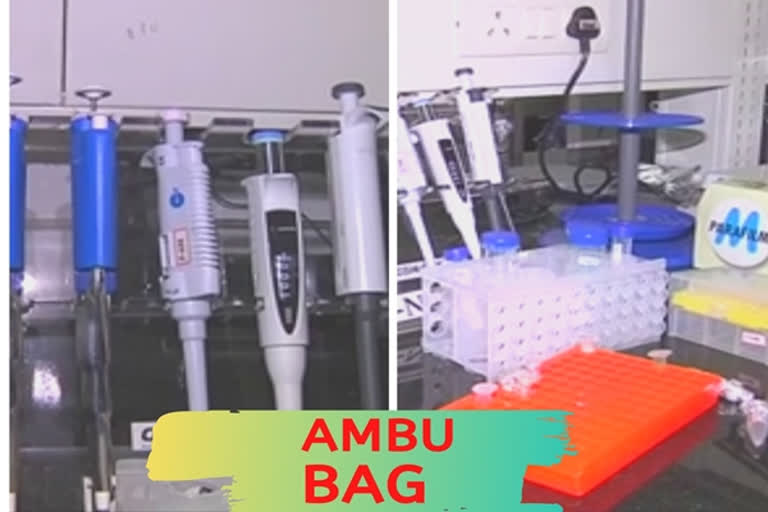Hyderabad (Telangana): Indian Institute of Technology Hyderabad Director Prof. B.S. Murty has called upon on the Government of India to consider adopting ‘bag valve mask’ as an alternative to meet any surge in demand for ventilators, both in India and other countries, to treat COVID-19 patients.
While the conventional ventilators are expensive, hard to produce, and not portable, Prof. B.S. Murty, Director, IIT Hyderabad and Prof. V. Eswaran, Department of Mechanical and Aerospace Engineering, IIT Hyderabad, highlight that ‘bag valve masks’ are small devices, which are used to deliver breathing support in emergency situations that are inexpensive, easy to produce, and portable - which therefore have every quality that is required in this crisis. The most common of these devices is the bag valve mask, often called by the propriety name of ‘Ambu Bag,’ that is used for resuscitation in emergency situations.
The COVID-19 virus has a varied effect on the people it infects. Some barely show symptoms, while they still pass on the virus to others who may be more seriously affected. Of the 15 per cent of COVID-19 affected patients who may need hospitalization, around one-third, (5 per cent) would likely develop respiratory difficulties for which ventilators for assisted breathing will become necessary.
The Professors note that while ‘bag valve mask’ is currently hand-powered and therefore not suitable for continuous use as a ventilator, it would be easy to design a similar device powered by an electrical source, which could be a car battery, apart from the conventional power supply. It could be made portable, and therefore adopted in villages and other areas without a power supply and be inexpensive enough to manufacture in bulk.
Elaborating on the advantages of this system, Prof. B.S. Murty, Director, IIT Hyderabad and Prof. V. Eswaran, Department of Mechanical and Aerospace Engineering, IIT Hyderabad, said, “Our estimate of the cost is that it can be manufactured for less than Rs 5000, or one-hundredth the cost of a conventional machine.
Also read: COVID-19: Andhra Pradesh defers salaries of CM, govt staff
The cost of manufacturing 6 million of these devices will be probably less than that of the inadequate number of 60,000 conventional machines mentioned above.
The cost is so low that it can be considered a single-use device that will be given over to a single patient and never used again. It needs to be manufactured, however, on an industrial scale, in millions, within a short time of a few months. There have been several designs proposed within India itself, with IIT Hyderabad having at least one proposed design.”
The Professors also added that this idea was not new. In the past few weeks, many countries have come up with this idea of manufacture of low-cost ventilators and have even started competitions where the winning design would be declared open-source, which are not patented, and can be given free for anyone to adopt. Several designs are already available for 3-D printing, and so can be manufactured on a small scale on a 3-D printer.
However, Prof. B.S. Murty and Prof. V. Eswaran also cautioned that while this was reassuring, there were some caveats involved:
* these designs are untested and unfortified
* Even if inexpensive, the designed devices should be capable of continuous and faultless 24x7 operation for at least one month – which requires very high performance both of the design and the manufactured components
* while 3-D printing could be part of the manufacturing solution, conventional manufacturing may be much more effective for making the millions of devices in the most rapid and cost-effective way.
Also read: K'taka CM to donate one year's salary to fight COVID-19




